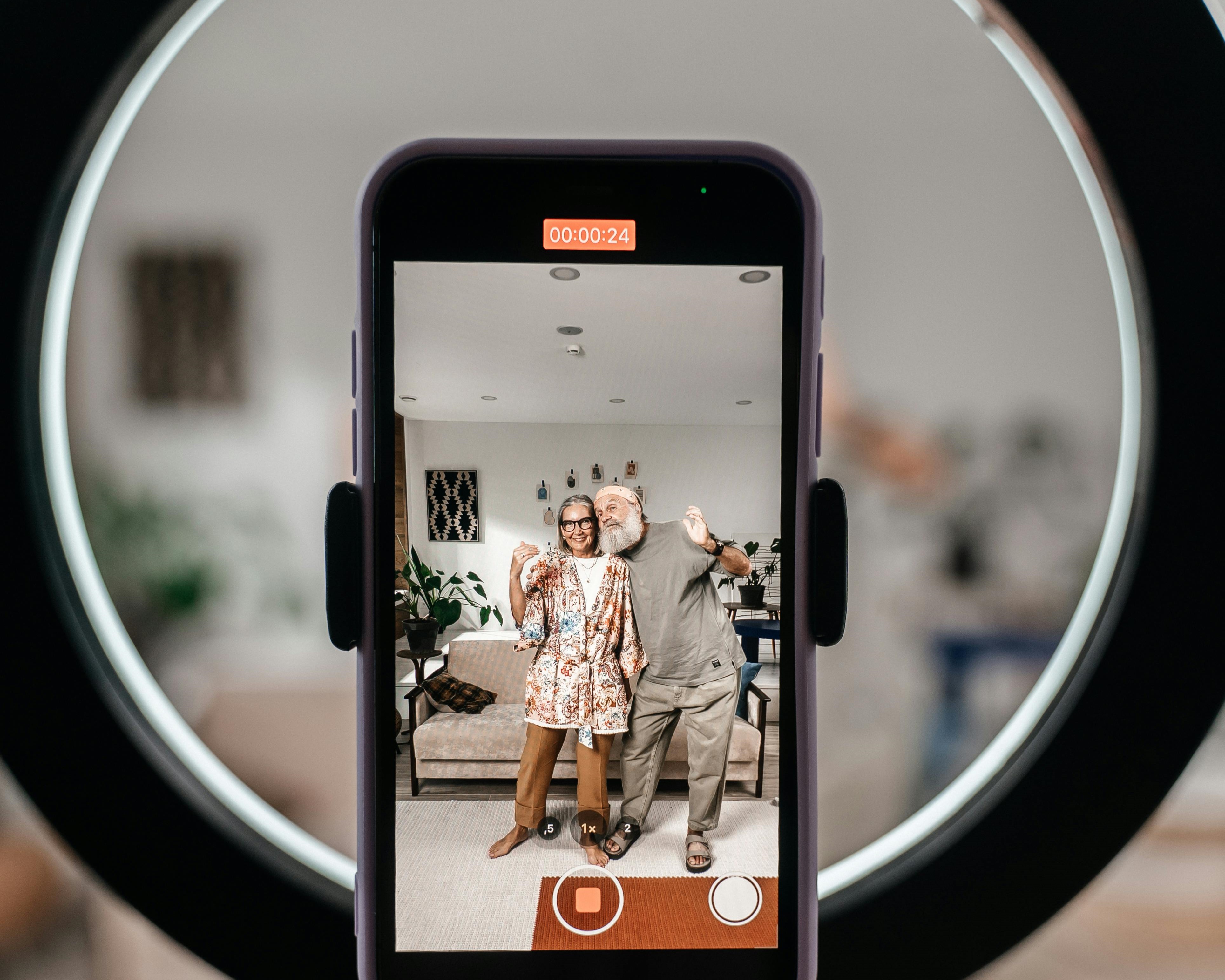
Memory is a problem for many people as they age. To combat this, wearable devices may help older adults recall precious memories through what is called ‘life-logging’, despite these technologies raising significant privacy concerns.
Researchers at Singapore Management University, led by Thivya Kandappu, have developed PrivacyPrimer, a tool designed to protect sensitive information captured by wearable cameras. Their approach uses selective image obfuscation to safeguard privacy, while preserving the ability to reminisce – striking a balance between memory recall and security.
Read the original research: doi.org/10.1145/3476047
Transcript:
Hello and welcome to Research Pod! Thank you for listening and joining us today.
In this episode, we discuss privacy concerns related to older adults using wearable devices that record their daily activities. This ‘life-logging’ is believed to improve quality of life by triggering memories, meaning older users can reminisce about their life experiences. A team of researchers at the Singapore Management University have been searching for ways to secure these images. Their recent paper, ‘Privacy Primer: Towards Privacy-Preserving Episodic Memory Support For Older Adults, ’ reveals their method- compromising picture quality ever so slightly, but just enough so that artificial intelligence algorithms cannot recognize the individual.
The ability to relive daily moments after struggling to do so in the past is truly life-changing for these individuals. While this is remarkable and an opportunity not available for previous generations, it comes with serious risks: the possibility of leaked content. This threat worsens when image recognition technologies can identify the other people in the recording and, therefore, any social connections the observer may have. The captured images, sounds, and videos pose a significant security risk to the individual.
Memory is a problem for many people as they age. They go about their days, attending social events and having lots of conversations, only to forget them later that evening or later. As you can imagine, this is troubling. Not being able to recall these memories impacts relationships, everyday activities and confidence. But newer technologies are changing the game. Wearable cameras can record all of these daily events or conversations.
And how does this work exactly? Wearable cameras automatically record images of a person’s life from their own perspective. These are put together in time-order to make a sort of digital diary to be reviewed at a later time. This allows the person to relive the event and hopefully jog the memory or trigger something in the brain so they can reconnect to that moment and reminisce those memories. Life-log images contain information about the time of an event as well as the context. Because these logs can capture very personal moments or objects. As you can imagine, eliminating the risk of these images being exposed is essential.
However, these embedded cameras automatically capture sensitive information, such as bystanders’, private situations’, and credit card details, opening the door to major security risks. An attacker, using computer vision technology, can isolate information with scarily high accuracy.
As you can imagine, this makes wearers apprehensive about using the device, ultimately abandoning it.
So, what can be done to provide this service to those needing it while eliminating security risks? Many attempts have been made in the past to obfuscate or obscure images. However, none of them were successful in helping the person to recall what they were looking at. The term “obfuscation” might be unfamiliar to some, but it is the act of making something unclear or confusing, in this case, parts of a recorded image. Image obfuscation imposes a natural trade-off: mild alterations may not adversely affect an image’s reminiscability but may not also conceal the sensitive objects effectively. On the other hand, extreme alterations may remove sensitive image content but may change the image so much that it is no longer helpful to the user, and they cannot relive that memory.
The researchers mentioned that it is more complex than just blurring parts of the image, as many elements of an image provide information. They set out to figure out the most useful way to obscure the image. They found that the most effective way was when the life-logger chooses the parts of the image to obfuscate themselves.
The first step was determining how users could obscure the images themselves. This led to the development of a tool named ‘PrivacyPrimer’. Privacy Primer is a platform that lets a user check the privacy of a life-log image before uploading it. Essentially, via an app, they can determine how personal or sensitive an image they captured on their wearable device is before it is uploaded. This platform has better protection for recorded images, leading to an approximately 40% decrease in the cloud’s ability to accurately guess what the images contain. This came with only a tiny 13.4% impact on the ability to remember the content of the images easily.
The study design involved 54 adults, and the aim was to measure a life-logger’s ability to successfully reminisce about the events or scene elements of an image. They wanted to know how visual cues in images, like locations and people, influence a life-logger’s ability to remember events or scene elements. Researchers conducted a user study to assess memory recall based on images with differences in how a person was presented. These were no human, a human without a visible face (i.e. the human is not facing the camera), and a human with a visible face. They measured how well participants remembered scenes based on the presence of humans and how visible they were.
The results were exciting. The research team discovered that, on average, the presence of a human face in images enhances memory recall by 31% compared to images without any human cues. This means it is easier to trigger the memory of a scene or event when looking at pictures with faces in them. Humans are wired to recognize and remember faces, and this study shows just that. What’s more, the location or context of the event influenced how well they could recall a memory. Events that took place somewhere personal, such as at home, somewhere unique, such as a hospital, or somewhere fun, such as a leisure event, there was a 28% improvement in reminiscability. These factors are all important when choosing which types of images will be more helpful for someone to look at in order to reminisce about a specific event. To recap- the better they could recall a memory, the easier they could reminisce about that event.
Wearable cameras are commonly used for smart surveillance, activity recognition, life-logging, and digital assistants. The large number of images collected through these applications, combined with recent developments in computer vision technologies, allow for an automatic understanding of visual data. While this is a great advancement for society, it also raises privacy concerns.
The research team set out to investigate how a life-logging service could gather private information by combining life-logs from different users. It emphasized the need for a platform called PrivacyPrimer, which allows users to check if their life-log images might reveal sensitive information before uploading them. They also explored the link between the ability to remember past events and the visual elements in the photos. It suggested ways to blur specific parts of images to protect privacy, especially human-related parts like faces and bodies.
Through this extensive user study, the challenge was to balance privacy and the ability of elderly individuals to remember past events. Ultimately, the team hopes this new method will allow elderly users to improve their privacy in life-log images by selecting a blurring method that has the least impact on their ability to reminisce about the recorded memory.
We all want to remember what happened during our day or week. Sometimes we reflect back on a particular conversation or event and reminisce about it. This ability is part of life and something we can often take for granted. Whether it is something funny that makes you chuckle when you remember it, or something interesting that triggers deeper thought. But for some elderly people, this ability to tap into these memories diminishes. Thankfully, wearable recording devices have brought back some of that magic, and the use of wearable devices for life-logging presents a promising solution for aiding memory recall in older adults. Keeping those recordings away from cyber attackers is paramount, and the development of tools like PrivacyPrimer shows potential for balancing privacy protection with preserving meaningful memories.
That’s all for this episode, thanks for listening. Links to the original research can be found in the shownotes for this episode. Don’t forget to stay subscribed to ResearchPod for more of the latest science!
See you again soon.
Also published on: https://researchpod.org/informatics-technology/privacyprimer-protecting-privacy-supporting-memory
Podcast is also available on Spotify, Apple iTunes, Google Podcasts, and many more (please use search term “ResearchPod”).
See More News
Want to see more of SMU Research?
Sign up for Research@SMU e-newslettter to know more about our research and research-related events!
If you would like to remove yourself from all our mailing list, please visit https://eservices.smu.edu.sg/internet/DNC/Default.aspx

